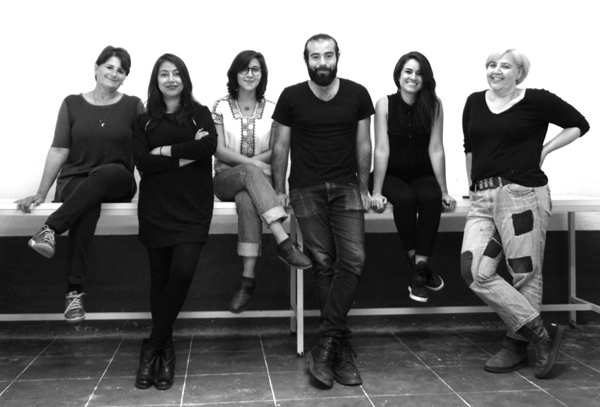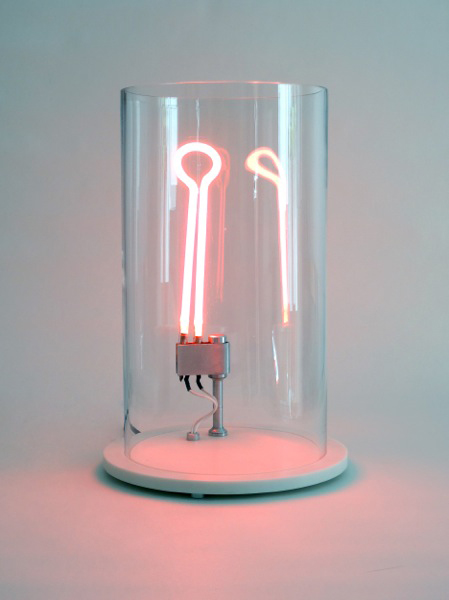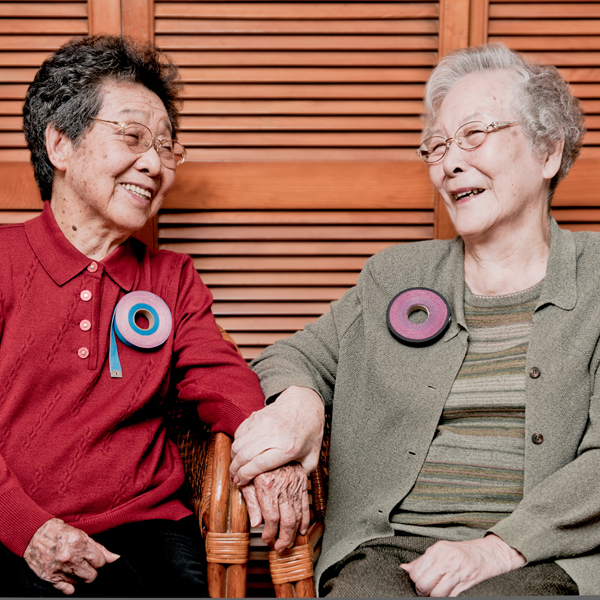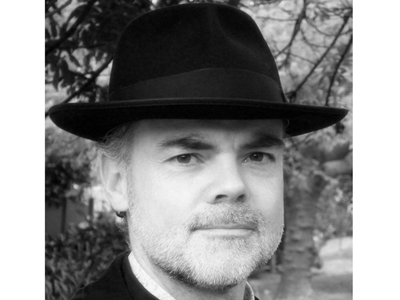Contemporary jewelry is expanding. This year’s program at the annual German jewelry think-fest Schmucksymposium is titled Exceeded Borders. It profiles conceptual moves in contemporary jewelry that take the field into the territory of visual art. Elsewhere, contemporary jewelry crosses geographical borders. Art Jewelry Forum has recently featured profiles of emerging scenes beyond the West, including India, China, and Korea. The recent critical compendium Contemporary Jewelry in Perspective included chapters on East Asia, Latin America, Australasia, and Southern Africa.
Expansion raises many questions. Let’s consider one of these: Is there a universal critical framework for contemporary jewelry? One standard universal value is originality, whereby artists are credited with contributing something new to the international field. At the 2011 SNAG Conference, Damian Skinner argued against the viability of such a value that could be applied independent of culture. While demurring from offering a definitive alternative model, Skinner proposed a tentative benchmark for evaluating work based on the quality of “ambition.” This “ambitiousness” contextualizes “originality” according to the location of the artist. Though the criterion of “ambitious” remains good enough to allow for diversity of place, “ambitious” still implies a studio model. The emerging scenes of Mexico and Taiwan point toward alternative models based on the collective as creative agent. How does that work?
Mexico Answers Our Prayers
Mexico has made a particularly strong claim as a new member of the international contemporary jewelry scene. This position is underpinned by the work of Otro Diseño, a foundation led by Valeria Siemelink, a Mexican-born graduate of Amsterdam’s Reinwardt Academy. Otro Diseño began working in 2003 with the first Latin American Design Biennale in the Netherlands, which included the work of the Brazilian Campana Brothers, whose favela-inspired furniture promised a design vision fresh from the New World. A series of innovative projects profiling Latin American designers continued in the Netherlands until 2010, when the exchange moved across the Atlantic for the Gray Area Symposium and exhibition in Mexico.
This historic event introduced Mexico to the European contemporary jewelry scene through a carefully curated structure involving blog, exhibition, symposium, and publication. Artists were paired between Latin America and Europe for an online collaboration lasting six months before the exhibition. The “gray area” premise was based on the mobility of contemporary jewelry as a creative field that transcends national boundaries. It featured participants like Jorge Manilla, a Mexican-born jeweler who had established himself in Belgium, and the Peruvian Ximena Briseño, who now works from Australia.
Following up the Gray Area series, Otro Diseño has since organized a series of workshops in Mexico with foreign jewelers, including Shari Pierce (USA, 2011), Jiro Kamata (Japan, 2012), Jorge Manilla and Tanel Veenre (Mexico and Estonia, 2013), Hanna Hedman (Sweden, 2014), and Mia Maljojoki (Finland, 2014). Extending into Latin America, they have also partnered with Walka Studio in taking workshops to Chile. These have given local jewelers personal experience into the creative worlds of artists to the north.
In her essay for Gray Area, Liesbeth den Besten saw such events as heralding the “United Nations of Contemporary Jewelry, where everybody talks in bad English. The world of contemporary jewelry does not care anymore about geographical origins…” [1] It is a bold universal vision. There have been some clear success stories following this, such as the La Frontera exhibition touring the US and Mexico. But while certain horizontal connections are possible, the different socioeconomic terrain between countries means there are vertical barriers to contemporary jewelry. As Karl Marx said, “there is no chamber music without chambers.”
An obvious challenge for Mexico is the relative absence of galleries or collectors specializing in contemporary jewelry. There are very limited economic resources to help launch local careers in the field. But rather than give up the prospect of being a contemporary jeweler, some aspirants have found an alternative way of framing their field of endeavor.

Following Gray Area, eight Mexican artists—Alberto Davila, Brenda Farias Ligia, Cristina Celis, Fernanda Barba, Holinka Escudero, Noemi Buendía, Zinna Rudman, and Paulina Lòpez—formed a collective called Sin Título (Without Title). They meet weekly to share ideas and develop projects that take contemporary jewelry to the world around them. In March 2013, they initiated the project La Chiclera: Black Is the New Gold, in which each member created a series of black ornaments, such as brooches and pendants, that fit into a clear plastic vending machine capsule. Customers could buy a trinket randomly dispensed from a vending machine located in the ice cream shop Helado Oscuro in Mexico City.

While this figure might seem a self-conscious flight of magical realism, it does reflect the real presence of saints in the everyday life of Mexico. The most popular saints seem to be those that support lost causes, such as Judas Tadeo and Jesus Malverde. It is not necessary to be a fervent Catholic in order to adopt saints. The members of the collective ironize their patron saint by making air quotes (forming quotation marks in the air with their fingers), reflecting contemporary jewelry as a religion of play.
Sin Título – the collective – opens up new paths for contemporary jewelry. First, it breaks with individual authorship as a basis for creation. The work is often anonymous and the membership of the collective is fluid. The group energy has its own momentum. Second, the semireligious framework suggests a new space for the jewelry object. Contemporary Jewelry in Perspective proposed a series of spaces that lend meaning to practice—page, bench, plinth, drawer, street, and world. These spaces were never intended to be exhaustive, and proposals were invited for contexts that had been overlooked.
San Título – the saint – suggests a specific space that has not yet been claimed for contemporary jewelry—the altar. As quasi-sacred objects, the works on an altar are detached from their makers and imbued with an agency of their own. To arrive there, they must be activated through a special ritual, often a prayer. Mayte Amezcua’s Amuleto San Judas Tadeo para Salvar Amores (Amulet San Judas Tadeo to Rescue Lovers) is used in a domestic environment as an object for prayer invoking the patron of difficult causes to help resolve marital conflict (Amezcua, incidentally, is not part of the Sin Título collective). Like those in the street, objects on the altar are defined partly by the meanings that users give to them. But unlike the street, these meanings invoke an agency beyond the individuals involved.

Another key difference from the street is that the altar is a reciprocal space. Members of the public who feel the benefit of the object’s powers are able to leave a gift in return, as a token of thanks. In Mexican churches, powerful objects like the statue of San Charbel Makhluf are adorned with ribbons, which are inscribed with messages. Others are adorned with milagros, miniature charms of body parts made of pressed metal. While the street is a space of freedom in which things come and go, on the altar objects are treated with reverence and care. In Mexico we see a new collective path opened up for contemporary jewelry, in lieu of the familiar spaces of plinth (gallery) and drawer (collector).
Taiwan Is a Family Affair

In absence of an established scene with specialist galleries, individual artists took turns curating a series of exhibitions themselves. Their inaugural show, A jewel a day keeps wrinkles away, contained works that celebrated the role of mothers. Photography by RoHsuan Chen featured the works selected by Mano to match the mothers’ individual stories (see video). While much contemporary jewelry has celebrated friendship, particularly within the field, the commemoration of personal family relationships is not as common.
During the other exhibitions in 2013, members of Mano MànMàn spent time trying to explain to local audiences why they should spend money on a piece of contemporary jewelry, even though it doesn’t contain precious materials. With the lease of its gallery now ended, the Mano MànMàn collective is now organizing a series of visits in the vein of Otro Diseño’s Mexican activities. The visit of Danish duo Makers Move will happen soon. And in 2014, a separate group of Taiwanese jewelers, Bench 886, did make it to Munich in a crowd-funded exhibition called Ni Hao.
Like Mexico, Taiwan does not yet have the economic infrastructure to support an autonomous contemporary jewelry scene. And rather than wait for one to emerge, these jewelers have tried to draw on existing social structures like family as a context. This could be dismissed as a holding position until something more international emerges, as happened in Melbourne with the establishment of Gallery Funaki. However, I would argue that this approach offers new possibilities for contemporary jewelry, inviting alternative ways of thinking about art in the world.

Rietveld and Beyond
Emerging from this picture is a story of globalization that engages a diversity of national cultures. Rather than a “development” story of a single evolutionary model, we can see particular national approaches unfolding as contemporary jewelry spreads across the world.
The spread of contemporary jewelry has its own specific cultural values. Mexico and Taiwan have been particularly influenced by the Dutch trajectory. The Rietveld Academy has produced figures like Gijs Bakker and Ted Noten, who represent a type of jewelry that is original, irreverent, and personal. Graduates have fanned out to many of the nascent scenes—Manon van Kouswijk in Melbourne, Ruudt Peters in Beijing, and Carine Terreblanche in South Africa.
While it is responsible for some of the most exciting work in contemporary jewelry, the Rietveld approach does not fit easily in all places. In countries like Mexico and Taiwan, which lack the collectors to support individual artists, some individuals turn to the collective as an alternative platform for experimentation. They are not alone in this. Collectives have been an important component in Australasia, including Gray Street Workshop in Adelaide, and artist-run spaces such as Fingers in Auckland and The See Here in Wellington, New Zealand. Joya Brava in Santiago has been developing contemporary jewelry in Chile through collective projects. Already, the first steps have been taken to start an exchange between collectives, with plans for Sin Título to develop a project with the Melbourne group Part B.
The challenge now beckons to develop a critical value that can be applied to the work of collectives that will help us sustain a common dialogue. In this case, Skinner’s value of “ambitious” may be more appropriate to an individual project than a group enterprise. Alternative values like “generative” or “solidarity” may be more relevant for a collective. Underpinning this challenge is the presumption that there are two tiers to the world contemporary jewelry scene, reflecting the global division between North and South, center and periphery.
It is important that this division be understood dialectically rather than hierarchically. The aspirations encouraged by studio jewelry create the conditions for the collective in those countries where reality falls short and economic conditions do not encourage development of individual careers in this field. But this can be seen as more than simply making virtue of a necessity. It is not just a holding position until proper economic conditions develop. The collective offers a challenge to the studio, claiming closer ties to life on the street. The values of ambition and participation offer competing visions for contemporary jewelry, paralleling the argument in relational art between Claire Bishop and Grant H. Kester about the relative value of experimentalism and participation. [2]
The unfolding of contemporary jewelry across the world adds a new dimension to the field. Up until now, the movement has been largely an expression of the individual artist. Currently there are signs of a more collective sensibility, especially reflected in the more Catholic Latin America. The next challenge is to find a platform that will enable these collectives to grow. Thy blingdom come!
INDEX Image: Alberto Davila, Untitled, 2014, object, cast aluminum and neon, 280 x 120 x 100 mm, photo: artist
[1] Gray Area Mexico 2010: Jewelry and Cultural Diversity (Mexico: Otro Diseño Foundation, 2010), 21.
[2] Claire Bishop, Artificial Hells: Participatory Art and the Politics of Spectatorship (London and New York: Verso Books, 2012), and Grant H. Kester, The One and the Many: Contemporary Collaborative Art in a Global Context (Durham, NC: Duke University Press Books, 2011).




